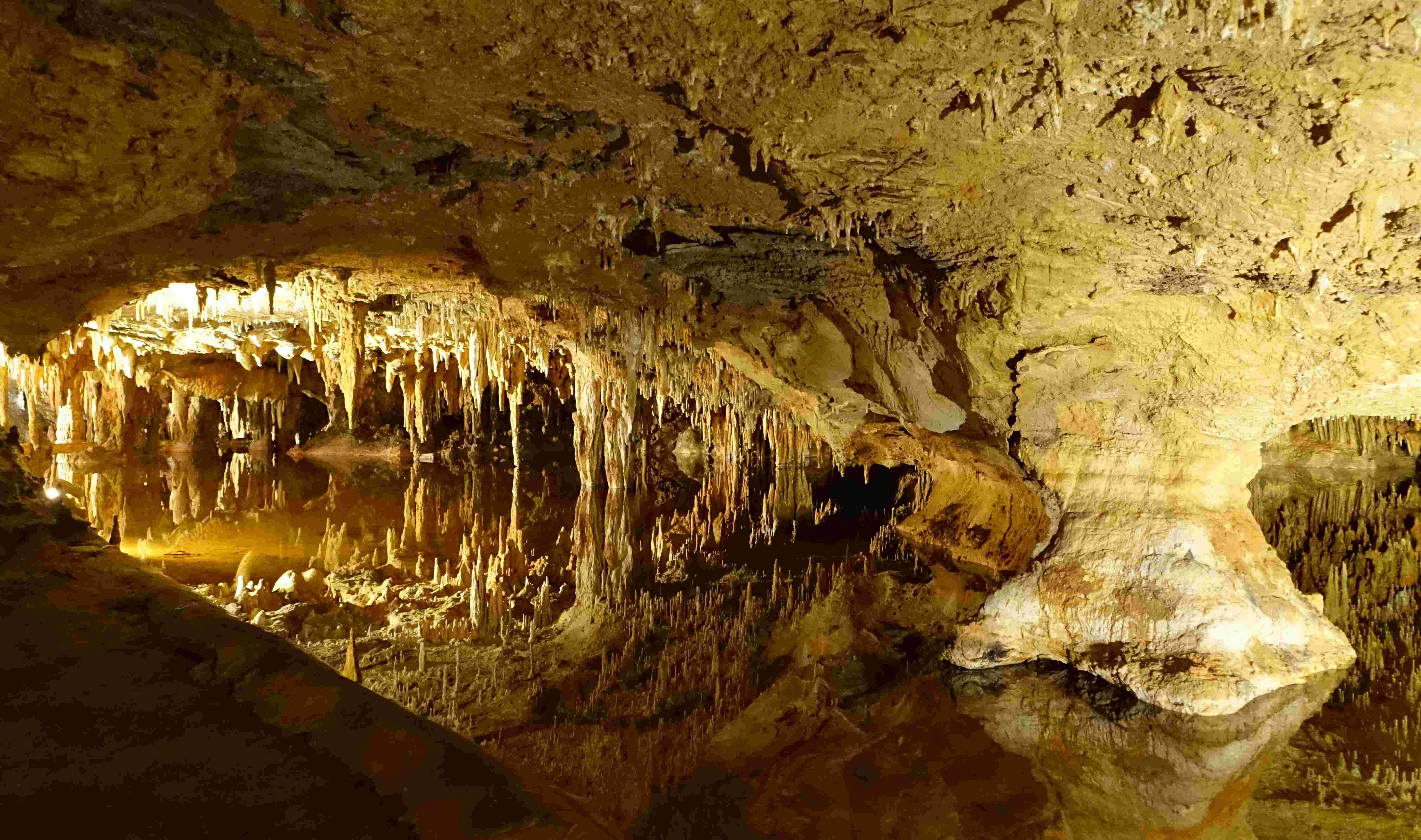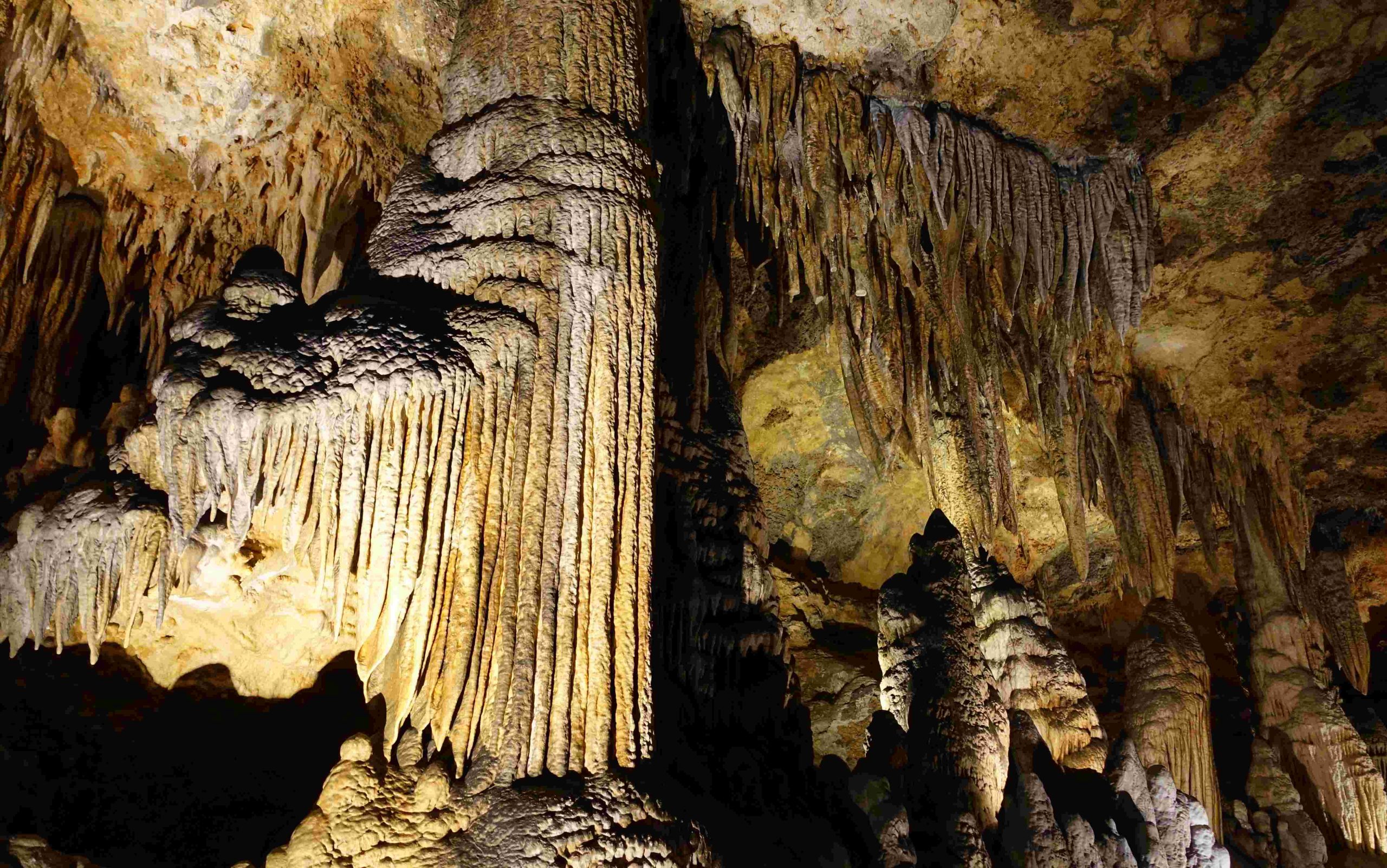Luray Caverns, located in Virginia’s Shenandoah Valley, is a geological wonder renowned for its stunning mineral formations. While not containing traditional gemstones, the caverns boast an array of crystalline structures composed primarily of calcite. These formations, including stalactites, stalagmites, and flowstone, have developed over millions of years through the slow deposition of minerals from water seeping through limestone. The caverns’ unique geological processes have created a subterranean landscape of unparalleled beauty, often referred to as nature’s own jewelry box.
What Types of Gemstone-like Formations Can Be Found in Luray Caverns?

Luray Caverns is home to a variety of speleothems, which are mineral formations that resemble gemstones in their beauty and crystalline structure. While not technically gemstones, these formations are often described as such due to their striking appearance. Here’s a list of the main types:
- Stalactites: Hanging from the ceiling like icicles
- Stalagmites: Rising from the floor like pillars
- Columns: Formed when stalactites and stalagmites meet
- Flowstone: Smooth, sheet-like formations
- Draperies: Thin, wavy curtain-like formations
- Helictites: Twisted, gravity-defying formations
These formations come in various colors, influenced by mineral impurities:
- White: Pure calcite
- Red and Yellow: Iron and iron-stained clays
- Black: Manganese dioxide
- Blue and Green: Copper compounds
How Are the Mineral Formations in Luray Caverns Created?

The creation of Luray Caverns’ mineral formations is a slow and intricate process:
- Rainwater seeps through soil, absorbing carbon dioxide
- This slightly acidic water dissolves limestone as it percolates through rock
- As the mineral-rich water enters cave spaces, it releases carbon dioxide
- Calcite precipitates out of the solution, forming crystalline structures
This process occurs at an incredibly slow rate, with formations growing approximately one cubic inch every 120 years. The result is a vast array of delicate and intricate structures that have developed over millions of years.
What Are Some of the Most Notable ‘Gemstone’ Formations in Luray Caverns?
Luray Caverns boasts several remarkable formations that stand out for their size, beauty, or unique characteristics:
- The Double Column: Two massive fluted pillars standing side by side
- Titania’s Veil: A pristine white flowstone formation resembling a cascading waterfall
- The Empress Column: A 35-foot high rose-colored stalagmite
- Giant’s Hall: A vast chamber located 164 feet below the surface
- Dream Lake: A shallow pool that creates perfect reflections of stalactites
- Pluto’s Ghost: A white column formed by the merger of stalactites and stalagmites
Each of these formations offers visitors a glimpse into the incredible artistry of nature, showcasing the caverns’ ‘gemstone-like’ beauty.
How Does the Geological Composition of Luray Caverns Contribute to Its ‘Gemstone’ Formations?
The geological composition of Luray Caverns plays a crucial role in the formation of its crystal-like structures:
- Limestone Base: The caverns are formed in limestone, a sedimentary rock composed primarily of calcium carbonate
- Karst Terrain: The Shenandoah Valley’s karst landscape, characterized by sinkholes and underground drainage systems, facilitates cave formation
- Mineral-Rich Water: Groundwater rich in dissolved minerals, particularly calcium carbonate, is essential for speleothem growth
- Stable Environment: The caverns’ constant temperature and humidity provide ideal conditions for continuous mineral deposition
This unique geological setting has allowed for the development of an extensive network of caves adorned with spectacular mineral formations over millions of years.
What Measures Are in Place to Preserve Luray Caverns’ ‘Gemstone’ Formations?
To protect the delicate formations in Luray Caverns, several conservation measures are in place:
- Controlled Access: Visitors are only allowed on designated pathways
- No-Touch Policy: Touching formations is strictly prohibited to prevent damage
- Climate Control: The caverns’ natural temperature and humidity are maintained
- Lighting Restrictions: Special lighting is used to minimize heat and algae growth
- Educational Programs: Visitors are educated about the importance of preservation
- Regular Monitoring: Scientists regularly assess the caverns’ condition
These measures ensure that future generations can continue to marvel at the caverns’ ‘gemstone’ formations.
How Can Visitors Best Experience Luray Caverns’ ‘Gemstone’ Formations?
To fully appreciate the beauty of Luray Caverns’ mineral formations, visitors should:
- Join a guided tour for expert insights
- Bring a camera to capture the formations’ beauty
- Take time to observe the intricate details of each formation
- Visit during off-peak hours for a more intimate experience
- Explore the accompanying museums for additional context
- Consider seasonal visits, as some formations may appear different throughout the year
By following these tips, visitors can ensure a memorable and enriching experience of Luray Caverns’ subterranean wonders.
In conclusion, while Luray Caverns may not contain traditional gemstones, its mineral formations offer a spectacle that rivals the beauty of any precious stone. The caverns stand as a testament to the incredible artistry of nature, showcasing millions of years of geological processes in a breathtaking underground landscape.
References:
1. Luray Caverns – Wikipedia
2. Discover the Magic of Virginia’s Luray Caverns
3. Educational Resources – Luray Caverns
4. Geology of Luray Caverns – National Park Service
5. Luray Caverns Official Website

